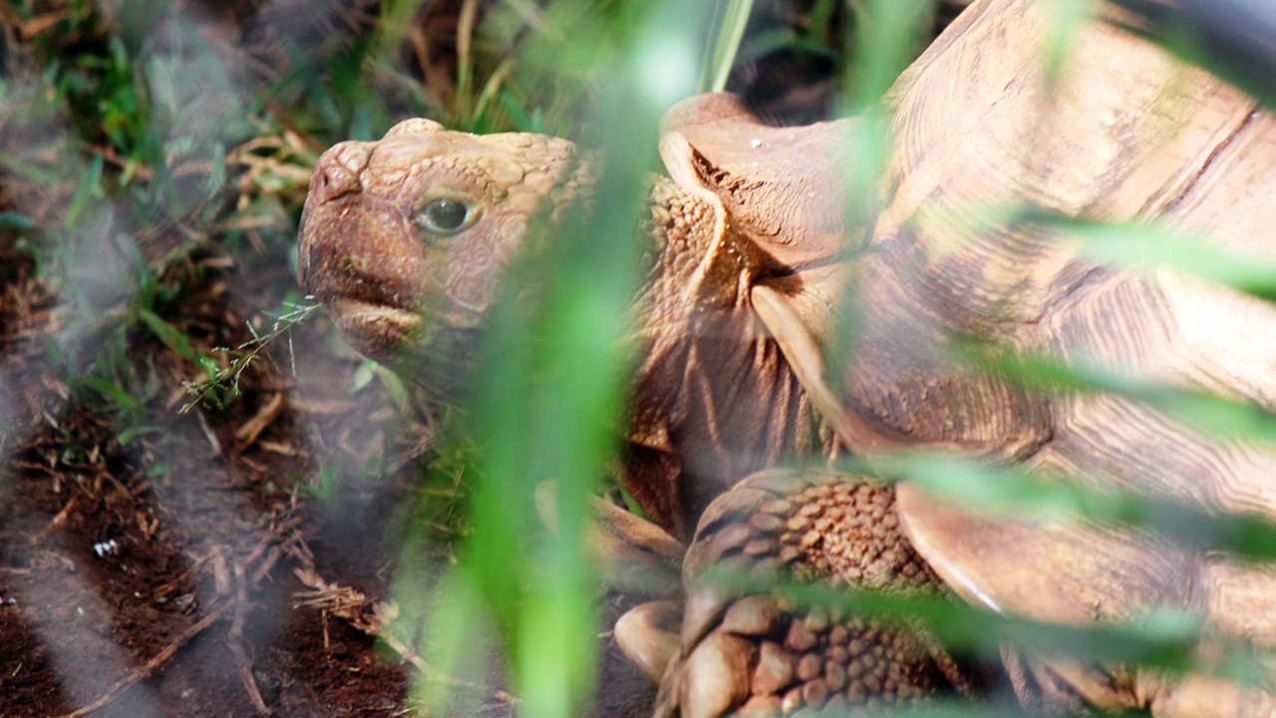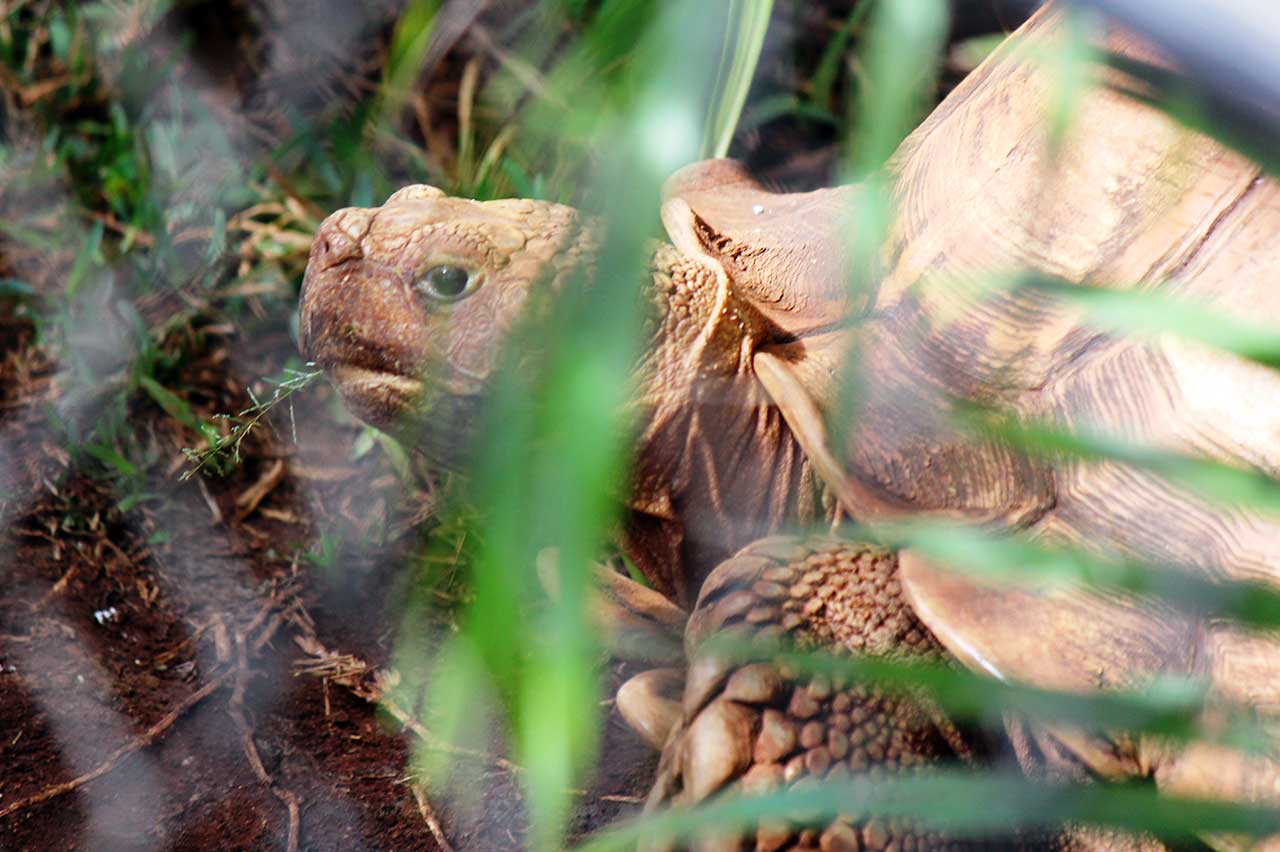geochelone sulcata
African Spurred-Thighed Tortoise
About Me
Scientific Name: Geochelone sulcata
Description
The African spurred tortoise (Centrochelys sulcata), also called the sulcata tortoise, is a species of tortoise, which inhabits the southern edge of the Sahara desert, in northern Africa. It is the third-largest species of tortoise in the world, the largest species of mainland tortoise, and the only species in the genus Centrochelys.
Fun Facts
- Sulcata tortoise can survive from 50 to 150 years in the wild.
- Sulcata tortoise grows quickly. It doubles its size every three years. Sulcata tortoises reach sexual maturity at the age of 15 years.
- Kingdom: Animalia
- Phylum: Chordata
- Class: Sauropsida
- Order: Testudines
Largest African mainland tortoise. To 35 inches. Females to 26 inches. A common pet in Europe; occasionally survives over a century.
Head moderately large; upper jaw doubly hooked uniformly. Edges of jaws strongly dentate. Prefrontal large, usually divided longitudinally. Frontal usually large, rarely broken up. Remaining upper head scales small, irregular.
Carapace sides descend abruptly, deeply notched in nuchal region. Anterior and posterior margins reverted and serrated. Dorsal shields concentrically grooved. Growth annuli on carapace scutes are usually very well defined. Plastron gulars strongly forked. Anals have deep median notch. Pectoral scutes extremely narrow. In mature specimens, especially males, anterior marginal scutes become strongly reverted. Five toes on front feet; four on hind. Anterior of forelimbs with large scales. Posterior side of thigh with 2-3 large conical tubercules. Heel with large, conical, spur-like, bony tubercules. 2-3 strong spurs on each side of tail.
Males much larger than females. Male has deeply forked gulars. Adult males have deep concavity in posterior half of plastron. Have long, thin tails tipped by a horny curving spur. Female more rounded appearance; features not so exaggerated. Tail short and blunt.
Adults’ carapace uniform brown to horn. Plastron, head and limbs uniform yellowish. Juveniles have pale yellow carapace with brown on scutes. Plastron yellow-white. Have lighter areoles on carapace plates.
Able to run and burrow quite well. Get excited just before it rains, running around. Become inactive when very hot or very cold. Can survive extended drought periods in self-dug burrows or “pallets.” Dig permanent sleeping burrows, which may be shared by two or more tortoises. Sides slant steeply down at 45-degree angles. Adult males hiss when approached too closely and retreat into their shell or burrow, where they wedge themselves in. Females do the same, make croaking noises, and throw the rear part of their shell violently about. Females may raise their shell up off the ground and drop it with a thud.
Have been instances where adults “conversed” with each other through a series of croaks, grunts, and whistles. This may have been challenge or threat behavior. Males are frequently aggressive, ramming and biting each other.
Central and northern Africa in dry regions, woodlands, and semi desert grass- and shrub land.
Breeding: Breeding males fight among themselves for access to females. Copulate during the rainy season (February-March) for about one week. May be repeated several times in one day, each contact lasting approximately 15 minutes.
Female is immobilized by the weight of the male, who presses down on the anterior part of her carapace with his forelimbs. He utters low-pitched rhythmic sounds like muffled rattling groans.
Female digs a pear-shaped nest for 1-4 hours. Sometimes she makes a “put put” sound while digging. She digs with front legs and pushes dirt out with hind legs. Eggs are laid and covered. Eggs are white, round, 5-1/2″, like large ping pong balls. Incubate 212 days in the wild or approximately 136 days at 29 C. Hatchlings emerge 1-3 days after a rain, usually at night or early morning, leaving distinct tracks. They take 3-10 days to escape to the surface. Hatchlings are 2″ long. Carapace is pale yellow; margin is strongly lobed. Each scute has narrow brown borders. Periphery wavy or serrated. Yolk sac is absorbed within a few days. Heavy growth periods have been recorded from March-April and October-November in most juveniles.
Assorted vegetables (especially succulents) and fruits. Prefers leaves of morning-glory (Ipomaea). Not all tortoises eat every day.
Other Reptiles
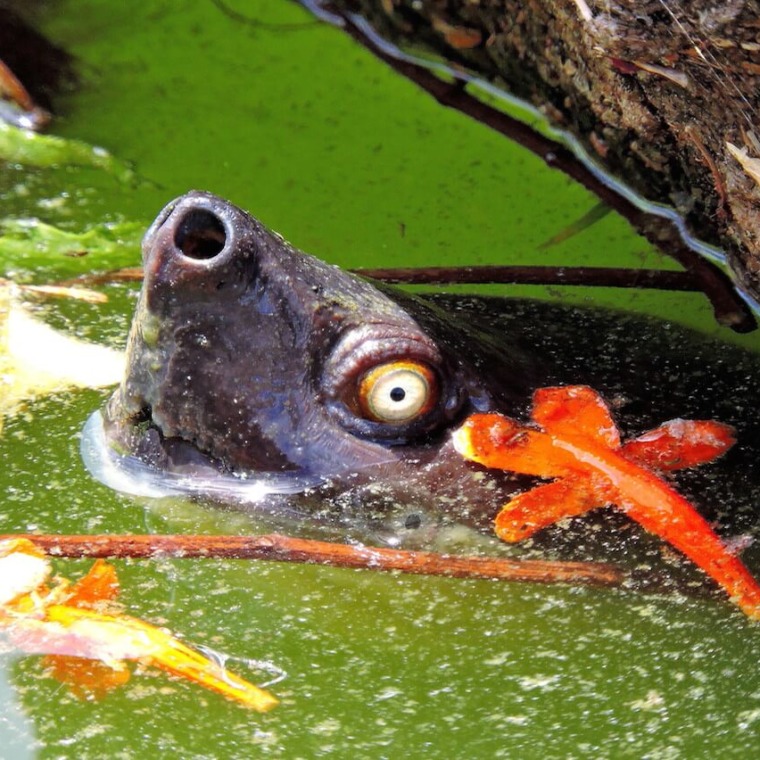
The last populations of Tutong are found in India, Indonesia, Bangaladesh, and Malaysia. It is extinct in its former range of Thailand, Myanmar, Vietnam, and Singapore.
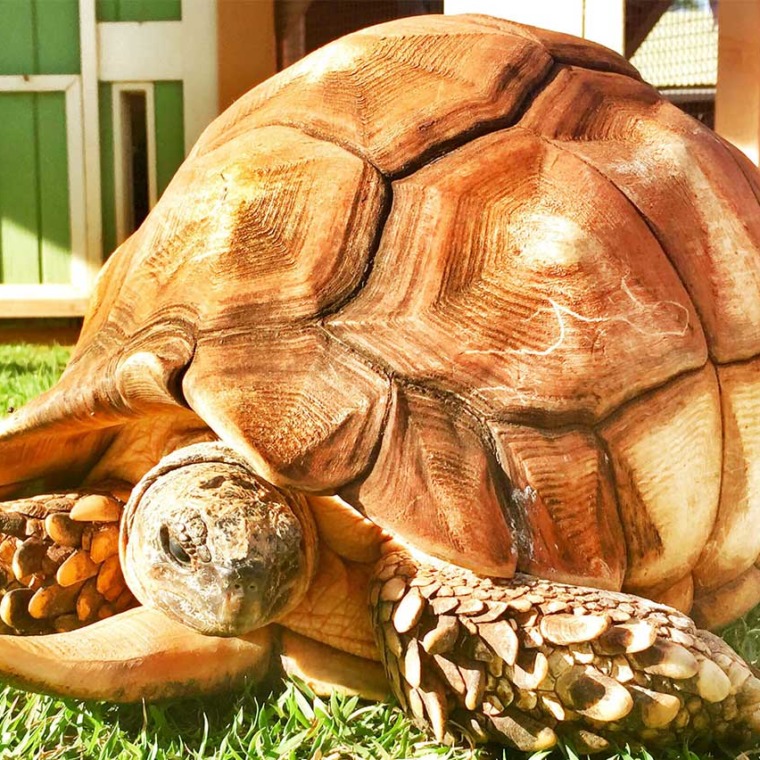
Inactive during cool, dry season (May to October). Does not dig burrows. Seeks protection in thickets and seeks shelter in surface litter. Forages during morning and late afternoon.
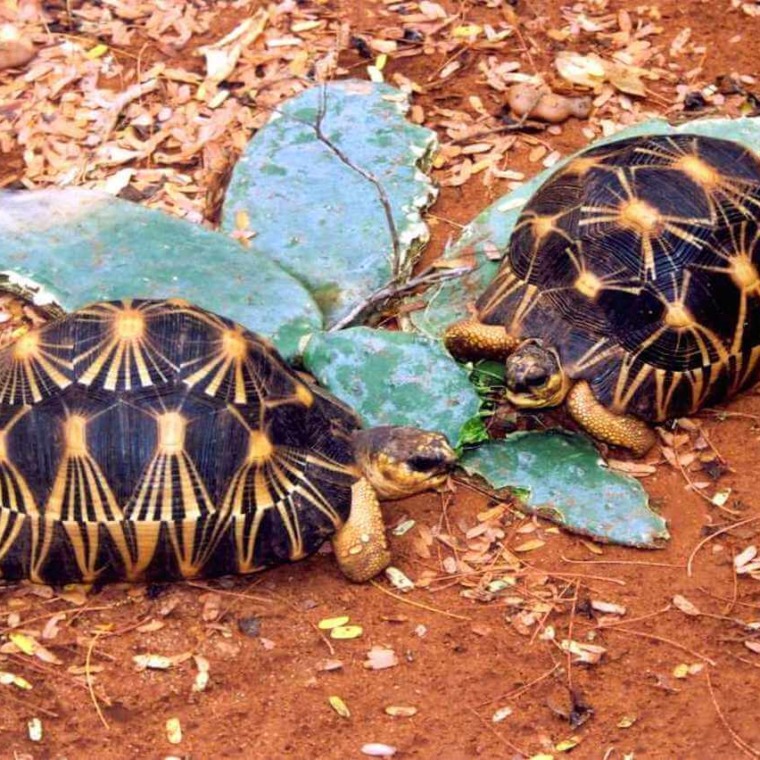
In the wild, this reptile is relegated to the extreme south and south-western portions of Madagascar. In recent times, they have also been introduced to the nearby island of Reunion.
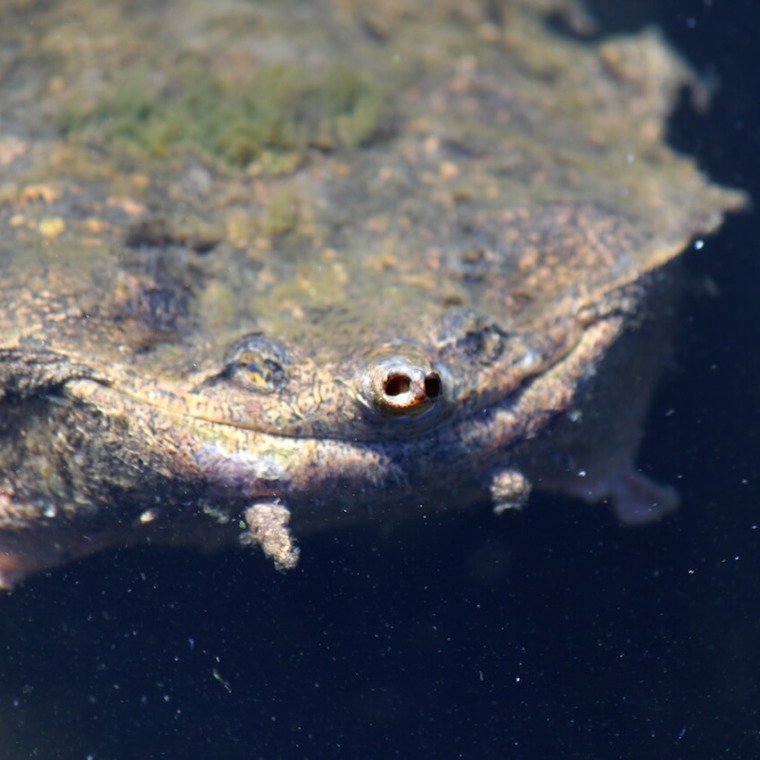
This species inhabits stagnant pools in Brazil and the Guianas and also in parts of the Amazon River and in Trinidad.
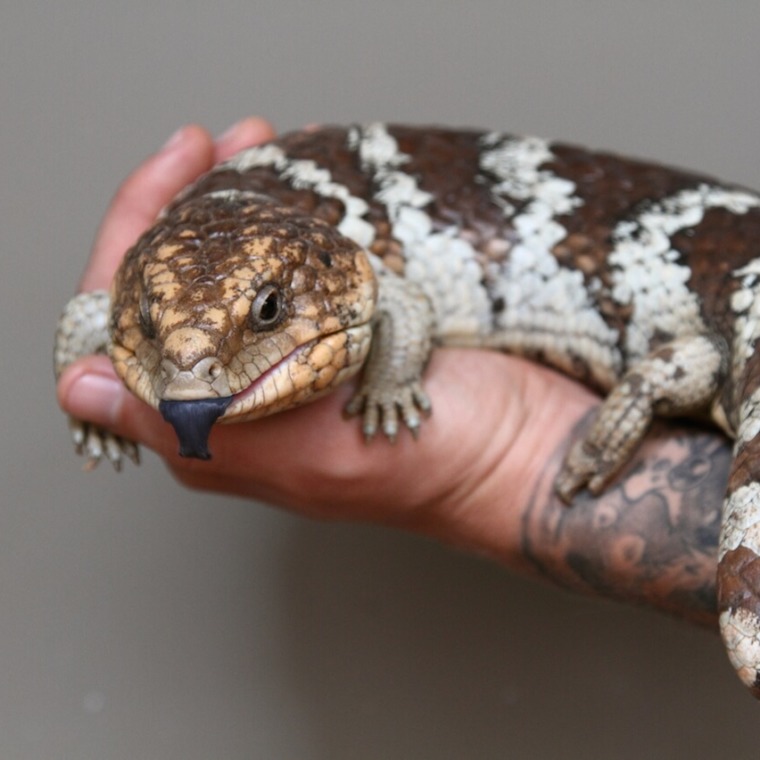
The Shingleback skink is found in southern and western Australia, in desert grassland areas or sandy dunes. Skinks are shy and secretive and seldom stray far from their shelter.


